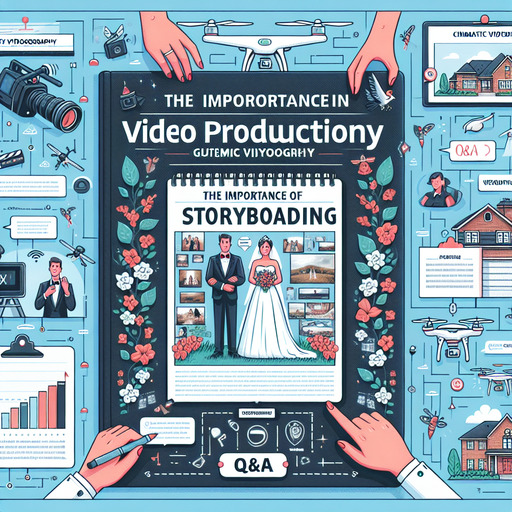
-
Table of Contents
Unlock the full potential of your video projects with the power of storyboarding! Discover how this essential step can streamline your production process, enhance creativity, and ensure a cohesive final product. Don’t miss out on the benefits—start storyboarding today! Learn more here.
Introduction
Storyboarding is a crucial step in the video production process, serving as a visual blueprint for filmmakers, animators, and content creators. It involves creating a sequence of drawings or images that represent the shots planned for a video, allowing the production team to visualize the narrative, plan the technical aspects, and ensure a cohesive flow of scenes. By outlining the key elements of each shot, such as camera angles, movements, and transitions, storyboarding helps to identify potential issues early, streamline communication among team members, and save time and resources during filming and editing. Ultimately, a well-crafted storyboard enhances the creative vision, improves efficiency, and contributes to the overall quality and coherence of the final video product.
The Importance of Storyboarding in Video Production: Enhancing Professional Videography Services and Cinematic Videography Through Effective Planning and Videography Tips for Wedding, Real Estate, and Drone Videography Projects
Storyboarding is an essential component in the realm of video production, serving as a blueprint that guides the entire creative process. This meticulous planning tool is invaluable for professional videography services, including cinematic videography, wedding videography, real estate videography, and even drone videography projects. By providing a visual representation of each scene, storyboarding ensures that every aspect of the video is thoughtfully considered and executed, ultimately enhancing the quality and coherence of the final product.
To begin with, storyboarding facilitates effective planning, which is crucial for any successful video production. It allows videographers to map out the narrative structure, visual elements, and technical requirements of the project. This pre-visualization process helps identify potential challenges and opportunities, enabling the team to address them before actual filming begins. For instance, in wedding videography, a storyboard can help capture the sequence of events, ensuring that no critical moments are missed. Similarly, in real estate videography, it can guide the videographer in highlighting the property’s key features in a logical and appealing manner.
Moreover, storyboarding enhances communication among the production team. By providing a clear visual reference, it ensures that everyone involved, from directors and camera operators to editors and sound designers, is on the same page. This collaborative approach minimizes misunderstandings and streamlines the workflow, leading to a more efficient production process. In cinematic videography, where complex scenes and special effects are often involved, a detailed storyboard is indispensable. It helps synchronize the efforts of various departments, ensuring that the director’s vision is accurately translated onto the screen.
In addition to planning and communication, storyboarding also plays a pivotal role in the creative process. It allows videographers to experiment with different ideas and visual styles before committing to a particular approach. This flexibility is particularly beneficial in drone videography, where capturing dynamic aerial shots requires careful consideration of angles, movements, and compositions. By sketching out these elements in advance, videographers can explore various creative possibilities and select the most compelling options for their project.
Furthermore, storyboarding provides a valuable reference during the editing phase. It serves as a roadmap that guides the editor in assembling the footage, ensuring that the narrative flows smoothly and coherently. This is especially important in wedding videography, where the goal is to create a seamless and emotionally resonant story. By following the storyboard, the editor can maintain the intended pacing and rhythm, resulting in a polished and professional final product.
In real estate videography, storyboarding can also enhance the marketing potential of the video. By strategically planning the shots and sequences, videographers can create a visually engaging and persuasive presentation that highlights the property’s unique selling points. This targeted approach can significantly increase the video’s impact and effectiveness, ultimately attracting more potential buyers.
In conclusion, the importance of storyboarding in video production cannot be overstated. It is a fundamental tool that enhances planning, communication, creativity, and editing, ensuring that the final product is of the highest quality. Whether it is for professional videography services, cinematic videography, wedding videography, real estate videography, or drone videography projects, storyboarding is an indispensable part of the process. By investing time and effort into creating a detailed storyboard, videographers can elevate their work, delivering compelling and visually stunning videos that captivate and engage their audience.
Q&A
1. **Question:** Why is storyboarding important in video production?
**Answer:** Storyboarding is important in video production because it helps visualize the sequence of the film, plan shots, organize the narrative, ensure continuity, and communicate the director’s vision to the crew, ultimately saving time and resources during filming.